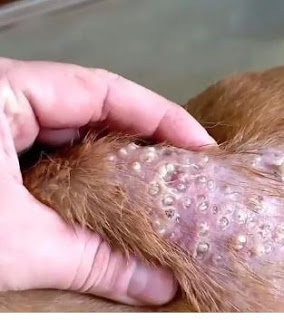What is a Maggot Wound and How to Treat it
What is a Maggot Wound and How to Treat it
Maggot infections in dogs, also known as myiasis, can be a distressing and potentially life-threatening condition. In this comprehensive guide, we'll delve into the world of canine maggot infections, exploring the causes, symptoms, treatment options, and preventive measures.
The Importance of Timely Treatment
Early recognition and prompt treatment of maggot infections are critical to ensuring your furry friend's well-being. Let's embark on a journey to better understand this condition and how to effectively manage it.
What Causes Maggot Infections in Dogs
Predisposing Factors
Wound Infestations: Open wounds, whether from injuries or surgical procedures, create an ideal environment for maggot infestations.
Poor Hygiene: Dogs with compromised hygiene are more susceptible to maggot infections. Learn how cleanliness plays a pivotal role.
Skin Fold Complications: Certain breeds with skin folds are prone to maggot infestations. We'll explore why and how to address this concern.
Identifying At-Risk Dogs
Not all dogs face the same risk. Discover which factors may make your canine companion more vulnerable to maggot infections.
Signs and Symptoms of Maggot Infections
Behavioral Changes
Maggot infections often lead to noticeable shifts in a dog's behavior. We'll delve into these behavioral indicators.
Physical Symptoms
Skin Lesions: Maggot-infested wounds manifest as skin lesions. Learn how to recognize these lesions and their characteristics.
Discharge: Unusual discharge from the affected area can be a telltale sign of maggot infestations. We'll explore what to look for.
Odor: The presence of maggots can result in foul odors. Discover how to differentiate these odors from routine doggie scents.
Why Maggots Infest Canine Wounds
The Ecological Niche
Maggots thrive in specific ecological niches within wounds. Understanding these niches sheds light on why they infest canine wounds.
The Role of Flies in Infestations
Certain fly species are the primary culprits behind maggot infestations in dogs. We'll delve into the life cycle and habits of these flies.
Diagnosing Maggot Infections in Dogs
Veterinary Examination
A comprehensive veterinary examination is the first step in diagnosing maggot infections. Discover the crucial aspects of this examination.
Diagnostic Procedures
Imaging: Advanced imaging techniques can aid in identifying the extent of maggot infestations. We'll explain these procedures.
Sampling: Collecting samples from the affected area is another diagnostic approach. Learn how it helps in confirmation.
Treatment Options for Maggot Infections
Veterinary Intervention
Maggot Removal: Veterinary professionals employ methods to safely remove maggots from the wounds. We'll explore these techniques.
Wound Debridement: Debridement of affected tissue is crucial for effective treatment. Understand how it's performed.
Antibiotics: In many cases, antibiotics are prescribed to manage secondary infections. Learn about their role in treatment.
At-Home Care
Cleaning and Dressing: Proper wound cleaning and dressing are essential for at-home care. We'll provide step-by-step guidance.
Pain Management: Dogs in pain need appropriate management. Explore methods for alleviating discomfort.
Preventive Measures: Preventing future maggot infections is crucial. Discover strategies to safeguard your dog.
Preventing Maggot Infections in Dogs
Proper Hygiene Practices
Maintaining proper hygiene for your dog is the first line of defense against maggot infections. We'll delve into hygiene tips.
Regular Health Check-ups
Regular veterinary check-ups play a vital role in preventing and detecting maggot infections early. Learn why they're essential.
Environmental Management
Managing your dog's environment can significantly reduce the risk of maggot infections. Discover practical steps to implement.
Conclusion:
This comprehensive guide has equipped you with the knowledge needed to understand, treat, and prevent maggot infections in dogs. By taking timely and appropriate actions, you can safeguard the health and happiness of your canine companion. Remember, knowledge is the key to effective care.


Comments
Post a Comment